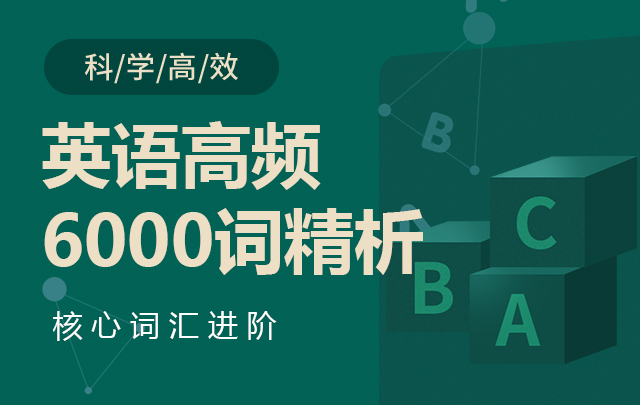US States Push to End Food Waste
美国各州推动结束食品浪费
【原文听力】
--------------------------------------------------------------------
By Dan Novak
04 December 2023
When Sean Rafferty first worked in a food store 40 years ago, anything that was not sold got thrown out.
But on a recent day at his store near the New York City area, he was preparing boxes of bread, vegetables, and milk products to be picked up by a food bank. It is part of a program in New York State requiring larger businesses to donate food, and, if possible, reusing small, leftover pieces of food.
New York is among a growing number of states trying to limit food waste. They are concerned that it is taking up space in landfills and adding to global warming. A landfill is a place for putting garbage.
Food waste including meat and vegetables releases methane gas after being put in a landfill. And saving unwanted food helps to feed hungry families.
Worldwide, about a third of food is wasted. In the United States, it is 40 percent. The U.S. spends about $218 billion each year growing and producing food that is wasted. About 57 million metric tons goes to waste, including 47.5 million metric tons that ends up in landfills.
"What's shocking to people often is not only how much we waste ... but also the impact," said Emily Broad Leib. She is a Harvard University professor and director of the school's Food Law and Policy Clinic. "Food waste causes about 8 percent to 10 percent of global greenhouse gas emissions."
In 2015, the U.S. Department of Agriculture and the Environmental Protection Agency announced a goal of 50 percent food waste reduction by 2030.
That has led to a number of state government efforts, along with smaller, nonprofit efforts.
Ten American states and Washington, D.C. have passed legislation or created policies to reduce, compost or donate waste.
The states of California and Vermont have programs for turning people's food waste into compost or energy. Connecticut requires businesses, including larger food sellers and supermarkets, to reuse food waste. Farmers in Maryland can get a tax credit of up to $5,000 per farm for food they donate.
Several states have joined New York in creating systems for food donation. Rhode Island requires food sellers servicing schools and universities to donate any unused food to food banks. And Massachusetts limits the amount of food that businesses can send to landfills.
As of late October, New York had sent 2.3 million kilograms of food, about 4 million meals, through its Feeding New York State program. The program supports the state's 10 area food banks and is hoping to double that number next year.
"Certainly, we should be reducing the amount we waste to start with, but then we should be feeding people before we throw food away..." said Sally Rowland. She is with the New York Department of Environmental Conservation.
Despite New York's success, some worry not enough is being done to meet the 2030 goal. Broad Leib and others have called for a national effort to coordinate the various state and local policies.
Kathryn Bender is a University of Delaware assistant professor of economics. She said donation programs are helpful. But she worries they might put the responsibility on nonprofits, instead of businesses.
"The best solution for food waste is to not have it in the first place," Bender said. "If we don't need to produce all that food, let's not put all the resources into producing that food."
I'm Faith Pirlo.
Dan Novak adapted this story for VOA Learning English based on reporting by The Associated Press.
--------------------------------------------------------------------
作者:Dan Novak
2023年12月4日
当Sean Rafferty40年前第一次在食品店工作时,任何未售出的东西都会被扔掉。
但在最近的一天,他在纽约市附近的店里准备了一些面包、蔬菜和牛奶产品的箱子,等待食品银行来取。这是纽约州的一个项目,要求大型企业捐赠食品,如果可能的话,重复利用剩余的小块食物。
纽约是越来越多试图限制食品浪费的州之一。他们担心这会占用填埋场的空间,并加剧全球变暖。填埋场是用来放垃圾的地方。
食品垃圾包括肉类和蔬菜在被送入填埋场后会释放甲烷气体。而保存不需要的食物有助于喂饱饥饿的家庭。
全球约有三分之一的食物被浪费。在美国,这个比例是40%。美国每年花费大约2180亿美元种植和生产被浪费的食物。大约有5700万公吨的食物被浪费,其中4750万公吨最终进入了填埋场。
Emily Broad Leib说:“让人震惊的往往不仅是我们浪费了多少食物……还有它的影响。”她是哈佛大学的教授,也是该校食品法律和政策诊所的主任。“食品浪费导致了全球温室气体排放的8%到10%。”
2015年,美国农业部和环保署宣布了到2030年将食品浪费减少50%的目标。
这导致了一些州政府的努力,以及较小的非营利性努力。
十个美国州和华盛顿特区已经通过立法或制定政策来减少、堆肥或捐赠废物。
加利福尼亚州和佛蒙特州有将人们的食品垃圾转化为堆肥或能源的项目。康涅狄格州要求包括大型食品销售商和超市在内的企业重复利用食品垃圾。马里兰州的农民可以获得最高5000美元的税收抵免,用于他们捐赠的食物。
有几个州已经加入了纽约,创建了食品捐赠系统。罗德岛州要求为学校和大学提供食品的销售商将任何未使用的食品捐赠给食品银行。而马萨诸塞州限制了企业可以送往填埋场的食物数量。
截至10月底,纽约通过其“喂养纽约州”项目,已经发送了230万公斤的食物,约400万顿餐。该项目支持州内的10个地区食品银行,希望明年能将这个数字翻倍。
“当然,我们应该首先减少我们浪费的数量,然后我们应该在丢弃食物之前先喂饱人们...”萨利·罗兰说。她在纽约环保部工作。
尽管纽约取得了成功,但一些人担心为了实现2030年的目标,我们做的还不够。 Broad Leib和其他人呼吁进行全国性的努力,以协调各种州和地方的政策。
凯瑟琳·本德尔是特拉华大学的经济学助理教授。她说捐赠计划是有帮助的。但她担心这可能会将责任推给非营利组织,而不是企业。
“对食品浪费的最佳解决方案是一开始就不产生它,”本德尔说。“如果我们不需要生产所有的食物,那就不要把所有的资源投入到生产食物中去。”
我是Faith Pirlo。
Dan Novak根据美联社的报道,为VOA学习英语改编了这个故事。
--------------------------------------------------------------------
这个故事中的词汇
global warming — n. 世界气温的近期上升,人们认为这是由大气中某些气体增加所引起的
garbage — n. 不再有用或不再需要的东西,已被丢弃
impact — n.一件事物撞击另一件事物的行为或力量
greenhouse gas — n.温室气体
emission — n. 从源头产生或发送出某物的行为
compost — n.由植物腐烂混合物组成,用于改善花园的土壤
supermarket — n.顾客可以购买各种食品,通常还有家居用品的商店
coordinate — n. 安排使两个或更多的人或团体可以适当且良好地一起工作
本文关键字:
 免费试听
免费试听

时长 : 5:22 主讲 : 金格妃

时长 : 27:51 主讲 : 金格妃

时长 : 17:20 主讲 : 郭宁

时长 : 3:54 主讲 : 金格妃

时长 : 26:58 主讲 : 乔迪

时长 : 26:58 主讲 : 乔迪

时长 : 26:58 主讲 : 乔迪

时长 : 3:54 主讲 : 金格妃

时长 : 1:46 主讲 : 金格妃
 推荐阅读
推荐阅读
Webb Telescope Captures Images of 19 Spiral Galaxies 韦伯望远镜捕捉到19个螺旋星系的图像
来源 : 网络 2024-02-19 13:01:00 关键字 :
Student Academy Awards Provide ‘Momentum’ for Young Filmmakers 学生学院奖为年轻电影制作人提供“动力”
来源 : 网络 2024-02-19 11:48:00 关键字 :
Do You Have a Doppelg?nger ? 你有一个“分身”吗?
来源 : 网络 2024-02-18 11:37:00 关键字 :
Is Elon Musk Worth $55 8 Billion to Tesla?埃隆·马斯克对特斯拉来说价值558亿美元吗?
来源 : 网络 2024-02-18 11:32:00 关键字 :
Remembering Chita Rivera 记忆中的奇塔·里维拉
来源 : 网络 2024-02-16 11:26:00 关键字 :
Women to Take Center Stage at the Grammys 女性将在格莱美奖上占据主导地位
来源 : 网络 2024-02-16 11:20:00 关键字 :
Reduction and Assimilation 音节减少和同化
来源 : 网络 2024-02-15 11:13:00 关键字 :
Why Is Canada Limiting Foreign Students? 为什么加拿大要限制外国学生?
来源 : 网络 2024-02-15 11:07:00 关键字 :
It Has Never Been More Costly to See the Super Bowl 观看超级碗的费用从未如此高昂
来源 : 网络 2024-02-14 11:02:00 关键字 :
Australian Filmmaker Shows Japanese Single Mothers, Children Face Poverty 澳大利亚电影制片人展示日本单亲妈妈和孩子面临贫困的情况
来源 : 网络 2024-02-14 10:55:00 关键字 :


 精品课
精品课
价格 : 0元
限报人数:1000人
价格 : 0元
限报人数:1000人
价格 : 0元
限报人数:1000人
价格 : 0元
限报人数:1000人
 阅读排行榜
阅读排行榜
 相关内容
相关内容